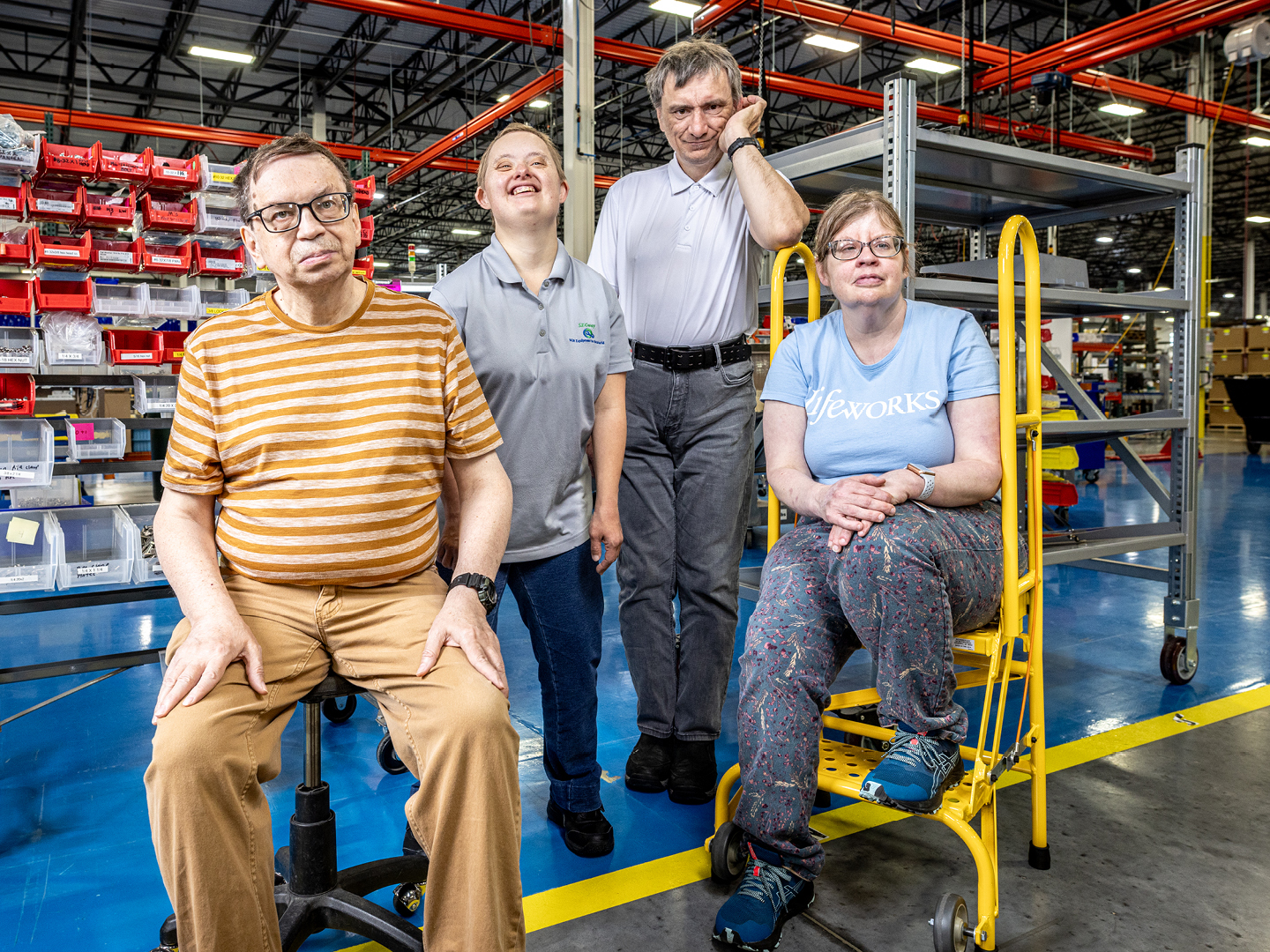BLOG
Disability Inclusion Means Business
National Disability Employment Awareness Month 2025
Every October, we celebrate National Disability Employment Awareness Month (NDEAM) — a time to honor the contributions of workers with disabilities and to reflect on what an inclusive economy could look like if everyone had a fair shot.
On its 80th anniversary, this year’s theme “Celebrating Value and Talent” reminds us that accessibility isn’t just about checking compliance boxes. It’s about designing workplaces that recognize the full range of human diversity, and understanding that disability inclusion and profitability go hand in hand.

The Current Landscape
Let’s start with the numbers.
Roughly 28% of adults in the United States has a disability — from mobility and sensory disabilities to chronic illnesses, mental health conditions, and neurodivergence. Yet only about 22.7% of people with disabilities were employed in 2024, according to the U.S. Bureau of Labor Statistics compared to 65.5% of people without disabilities.
That’s not a skills gap. It’s an accessibility gap.
Even among working-age adults (ages 16–64), only about 37% of people with disabilities are employed — the highest rate ever recorded, but still less than half the participation of nondisabled peers. This means millions of qualified, capable people are being left out of the workforce not because of lack of talent, but because of structural and cultural barriers.
Those barriers take many forms:
- Hiring processes that rely on inaccessible online applications or algorithmic screening tools.
- Interview settings that prioritize eye contact or social performance over skill.
- Office spaces, meeting platforms, or job descriptions that assume a narrow idea of how people can or should work.
- Outdated assumptions that “accommodations” are costly or complicated.
Each of these quietly filter out disabled talent long before the conversation about hiring even begins.

Why Disability Inclusion Is Good for Business
For companies focused on innovation, customer reach, and long-term growth, disability inclusion is not a charitable act, nor should it be— it’s a business advantage.
Recent global studies show that people with disabilities and their families control over $18.3 trillion in annual disposable income. When businesses design products, services, and workplaces inclusively, they tap into one of the largest and most loyal consumer bases in the world.
Here’s what the data — and lived experience — tell us:
1. A larger, stronger talent pool
As labor shortages continue across industries, inclusive hiring strategies open the door to millions of job seekers who are skilled, dependable, and eager to contribute. People with disabilities often bring persistence, adaptability, and critical thinking skills shaped by navigating systems that weren’t designed with them in mind. Companies that hire inclusively often find employees with disabilities perform on par or better in productivity, safety, and attendance than nondisabled peers.
2. Increased productivity and retention
Employees who feel supported through flexible scheduling, assistive technology, or simple environmental adjustments are more engaged and loyal.
According to multiple corporate studies, companies that lead in disability inclusion enjoy 28% higher revenue, 30% higher economic profit margins, and double the net income of their peers.
3. Innovation through lived experience
When organizations include people with disabilities at every level — from entry roles to executive leadership — they gain insights that fuel innovation. Accessibility drives better design for everyone. The same curb cuts built for wheelchair users make life easier for travelers with luggage and parents pushing strollers. The same captioning that benefits Deaf employees also supports multilingual teams and people working in noisy environments. Countless accessibility inventions by or for the disability community benefit people with and without disabilities and continue to be created each year.
4. Brand loyalty and reputation
Consumers notice when companies “walk the talk.” Inclusive businesses build credibility not just with disabled customers, but with the 75% of consumers who say a brand’s diversity and inclusion reputation influences their purchasing decision in 2024.
Accessibility sends a signal of character – that each customer and employee is valued.
5. Risk reduction and cost savings
Ignoring accessibility can be expensive. In the U.S., ADA-related lawsuits over workplace or web inaccessibility have climbed sharply, costing companies hundreds of thousands in settlements and reputational damage.
But proactive inclusion costs far less. Over half (61%) of workplace accommodations cost $0, and 33% have a one-time cost with a median of $300.
Designing access from the start through Universal Design — in facilities, technologies, and HR systems — reduces future retrofit costs and creates smoother operations for everyone. Designing universally from the beginning doesn’t cost much either, it is typically 1% or less of the entire build project.
Now that you know the numbers and the benefits, how can you build an accessible workplace? Check out our next blog on shifting from awareness to action.
Read Similar Blogs
View All-
![]()
-
![]()
-
![]()
blog
A Day at the Lifeworks Center for Disability Inclusion – New Hope: A New Understanding Starts with One Visit
Posted August 19, 2025

